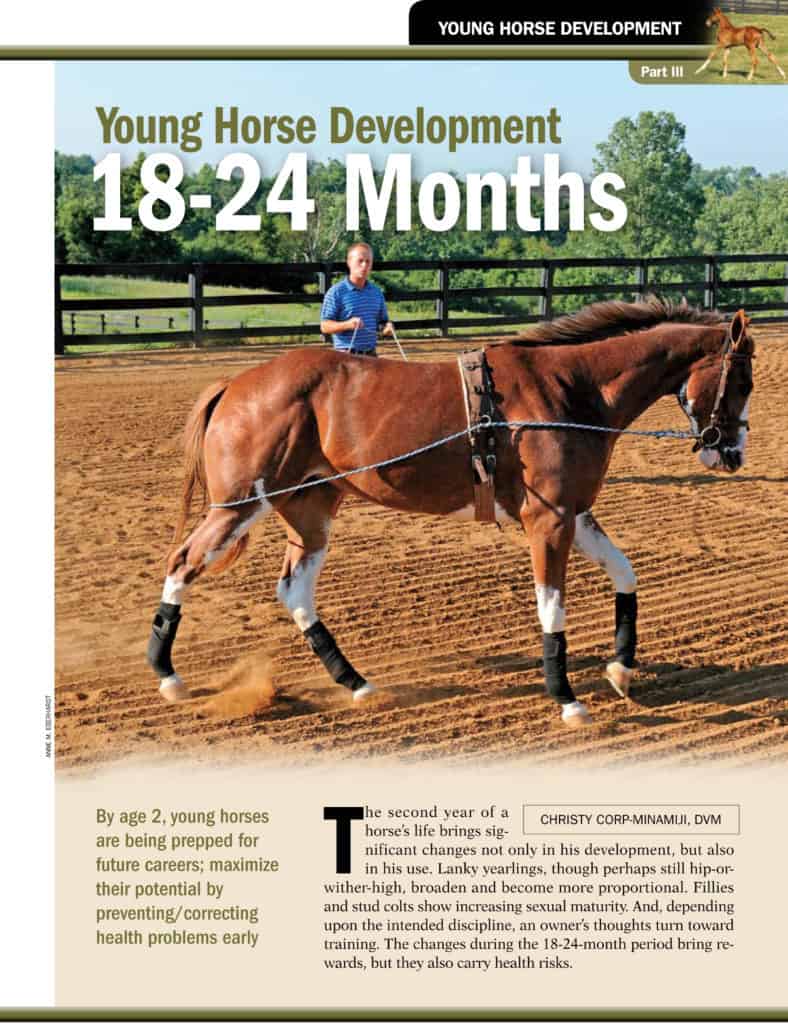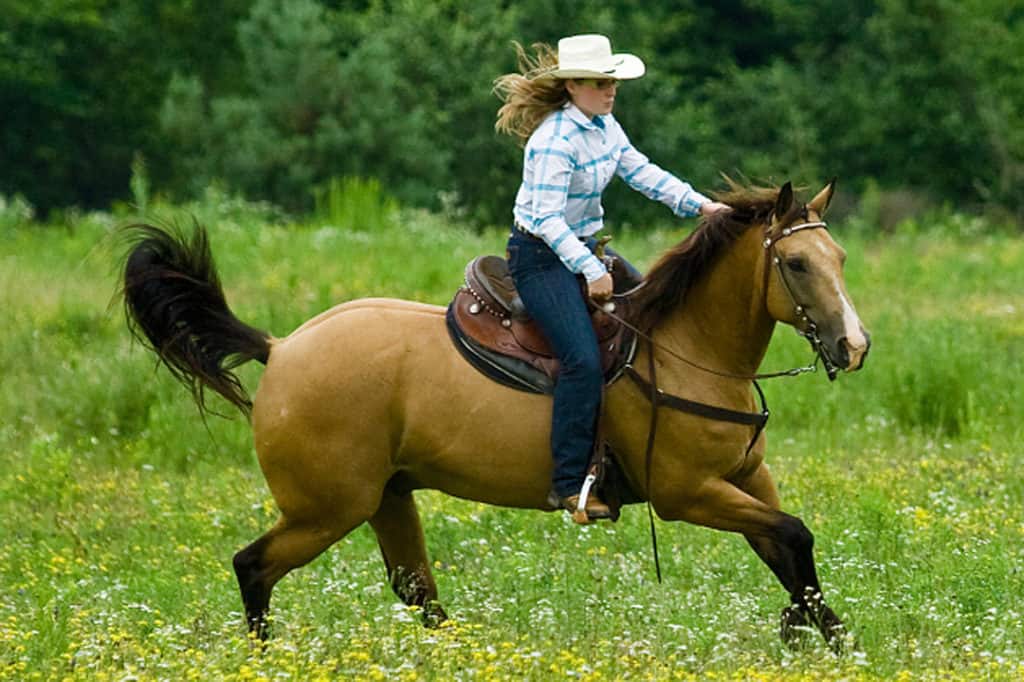
Young Horse Part 3: 18-24 Months
The second year of a horse’s life brings significant changes not only in his development, but also in his use. Lanky yearlings, though perhaps still hip-or- wither- high, broaden and become more proportional.

The second year of a horse’s life brings significant changes not only in his development, but also in his use. Lanky yearlings, though perhaps still hip-or- wither- high, broaden and become more proportional.

If you’re familiar with confinement areas, you probably think of them as small areas that don’t give horses much opportunity to move about. However, an emerging trend, called track paddocks, may change the way you view confinement areas.

Learn about how your horse’s body adapts to exercise and how to optimize his fitness.
In movies it is not unusual to see a cowboy ride his horse forever, through all types of weather and terrain; in reality, horses are equine athletes that must be properly conditioned to perform as needed. “The general design of an equine conditioning

Springtime heralds the beginning of warm, sunny days and the start of the competition season. As you plan your spring and summer training schedule, however, keep in mind that your horse’s body will need time to adjust to new demands.
The Kentucky Horse Racing Commission (KHRC) voted there was probable cause to believe that both jockey John Velazquez and chief state steward John Veitch were in violation of regulations regarding Life At Ten’s participation in the 2010 Breeders’ Cup
In reviewing the circumstances surrounding Life At Ten’s subpar performance in the 2010 Breeders’ Cup Ladies’ Classic Nov. 5 at Churchill Downs in Louisville, Ky., the Kentucky Horse Racing Commission (KRHC) has concluded that the filly should have
Horses are athletes, too, and according to research, they need that stretching as much as humans do.
Abnormalities in the throats of yearling racehorses will negatively impact the horses’ athletic potential, making careful evaluation of these structures an important part of the prepurchase examination.
“Veterinarians routin
Most people wouldn’t think of getting up from a desk job and heading off into the mountains or hill country for long hikes without first getting into condition. The same should be true for your horse.
The time to pull out the thermometer and stethoscope to check your horse’s temperature, pulse (heart rate), and respiration (TPR) for the first time is not when he’s looking a little puny and you and the veterinarian are on the phone trying to decide whether it’s an emergency. Instead, these baseline measurements should be part of a horse’s routine care.

Lin Xie, a student at Louisiana State University, discusses conditioning horses with degenerative suspensory ligament desmitis. (2:42)
Many horses are trained athletes that are bred and conditioned for a specific sport such as racing, jumping, western performance or dressage. While these sports are relatively safe, just like a human athlete, there is always a possibility of injury and in most cases with horses the injury tends to be lameness.
Grey Parks, a graduate student working with Laurie Lawrence, PhD, at the University of Kentucky, conducted a study to determine if feeding endophyte-infected fescue would affect exercising horses, particularly their ability to recover from exercise in the heat.
An inaugural study has found that a sodium acetate electrolyte solution given orally with a typical hay and grain meal following exercise enhanced skeletal muscle metabolism to restore depleted glycogen (energy) sources.
More than 1,150 readers of TheHorse.com responded to a poll asking, “During peak riding times in your region, how often do you ride or exercise your horses?”
Stay on top of the most recent Horse Health news with
"*" indicates required fields